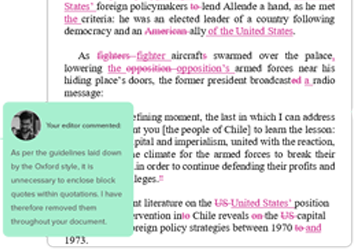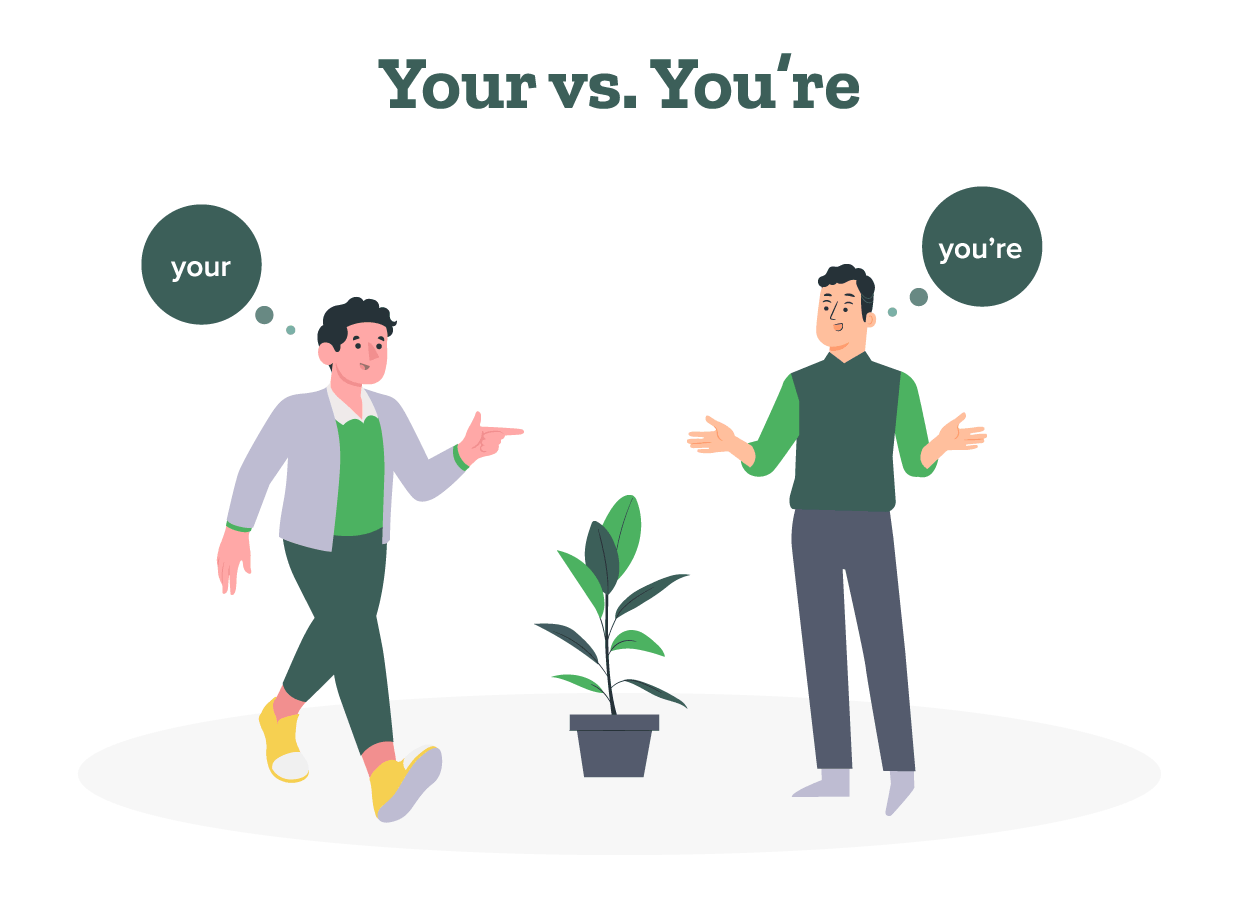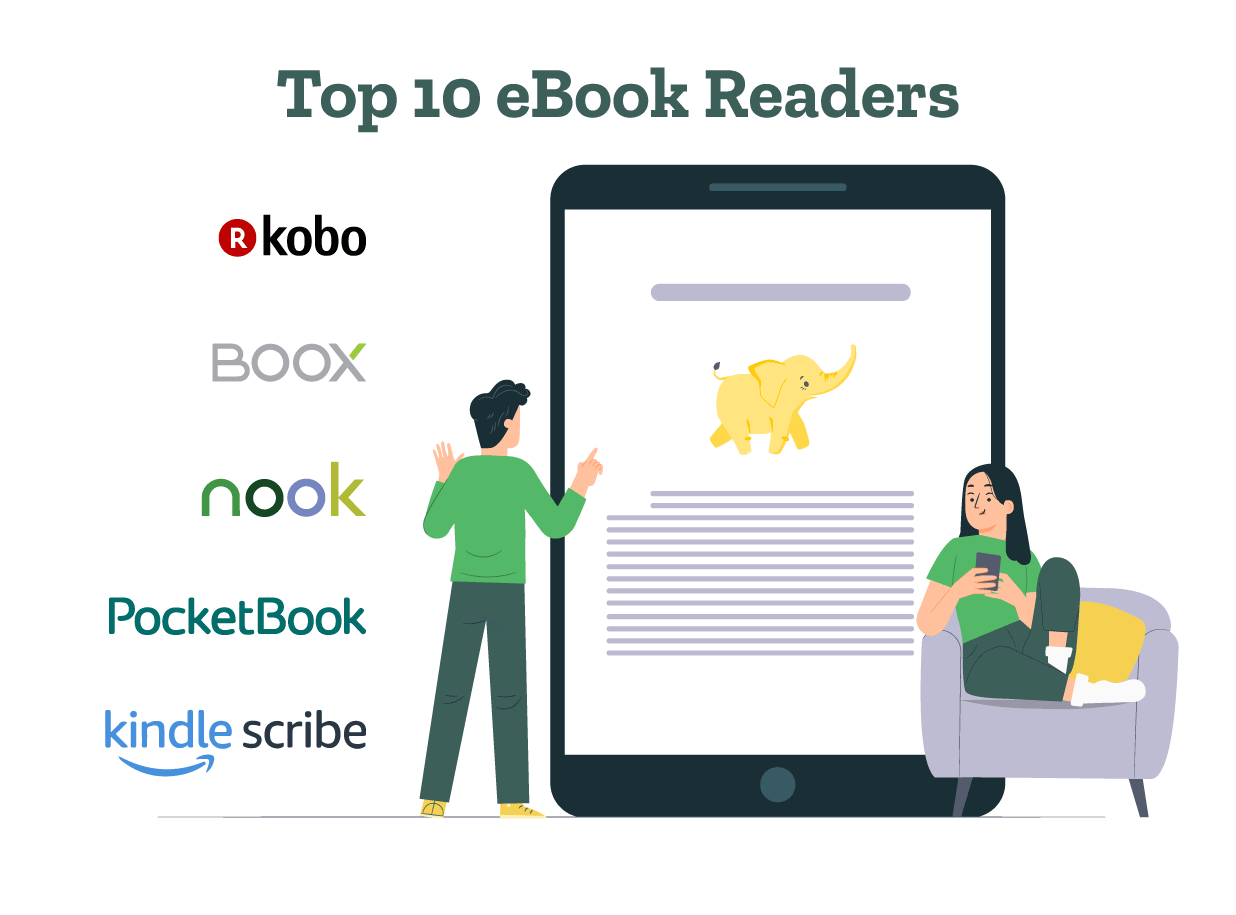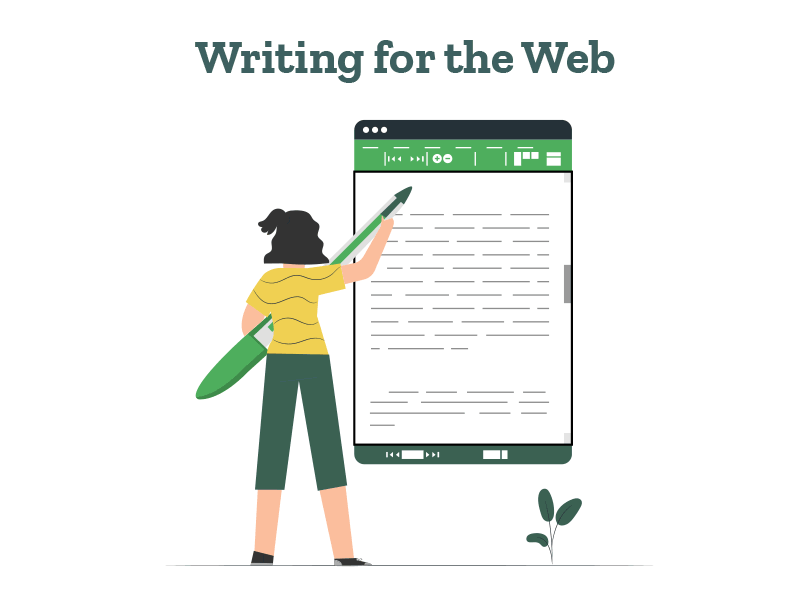- A List of Writing Contests in 2022 | Exciting Prizes!
- Em Dash vs. En Dash vs. Hyphen: When to Use Which
- Book Proofreading 101: The Beginner’s Guide
- Screenplay Editing: Importance, Cost, & Self-Editing Tips
- Screenplay Proofreading: Importance, Process, & Cost
- Script Proofreading: Rates, Process, & Proofreading Tips
- Manuscript Proofreading | Definition, Process & Standard Rates
- Tips to Write Better if English Is Your Second Language
- Novel Proofreading | Definition, Significance & Standard Rates
- Top 10 Must-Try Writing Prompt Generators in 2024
- 100+ Creative Writing Prompts for Masterful Storytelling
- Best 101 Greatest Fictional Characters of All Time
- Top 10 eBook Creator Tools in 2024: Free & Paid
- 50 Timeless and Unforgettable Book Covers of All Time
- What Is Flash Fiction? Definition, Examples & Types
- Best Book Review Sites of 2024: Top 10 Picks
- 80 Enchanting Christmas Writing Prompts for Your Next Story
- Your Guide to the Best eBook Readers in 2024
- Top 10 Book Review Clubs of 2024 to Share Literary Insights
- 2024’s Top 10 Self-Help Books for Better Living
- Writing Contests 2023: Cash Prizes, Free Entries, & More!
- Top 10 Book Marketing Services of 2024: Features and Costs
- Top 10 Book Publishing Companies in 2024
- What Is a Book Teaser and How to Write It: Tips and Examples
- Audiobook vs. EBook vs. Paperback in 2024: (Pros & Cons)
- How to Get a Literary Agent in 2024: The Complete Guide
- Best Fonts and Sizes for Books: A Complete Guide
- Alpha Readers: Where to Find Them and Alpha vs. Beta Readers
- Author Branding 101: How to Build a Powerful Author Brand
- How to Write a Book Report | Steps, Examples & Free Template
- A Guide on How to Write a Book Synopsis: Steps and Examples
- How to Write a Book Review (Meaning, Tips & Examples)
- Book Title Generators: Top 10 Book Name Generators of 2024
- 50 Best Literary Agents in the USA for Authors in 2024
- Building an Author Website: The Ultimate Guide with Examples
- Top 10 Book Printing Services for Authors in 2024
- 10 Best Free Online Grammar Checkers: Features and Ratings
- What Is a Poem? Poetry Definition, Elements, & Examples
- Top 10 Paraphrasing Tools for All (Free & Paid)
- Top 10 Book Editing Software in 2024 (Free & Paid)
- What Is an Adverb? Definition, Types, & Practical Examples
- What Are Large Language Models and How They Work: Explained!
- What Is an Adjective? Definition, Usage & Examples
- Top 10 Hardcover Book Printing Services [Best of 2024]
- 2024’s Top 10 Setting Generators to Create Unique Settings
- Different Types of Characters in Stories That Steal the Show
- Top 10 Screenplay & Scriptwriting Software (Free & Paid)
- 10 Best AI Text Generators of 2024: Pros, Cons, and Prices
- Top 10 Must-Try Character Name Generators in 2024
- How to Track Changes in Google Docs: A 7-Step Guide
- 10 Best AI Text Summarizers in 2024 (Free & Paid)
- 2024’s 10 Best Punctuation Checkers for Error-Free Text
- Top 10 AI Rewriters for Perfect Text in 2024 (Free & Paid)
- 10 Best Plot Generators for Engaging Storytelling in 2024
- 11 Best Story Structures for Writers (+ Examples!)
- How to Write a Book with AI in 2024 (Free & Paid Tools)
- Writing Contests 2024: Cash Prizes & Free Entries!
- Patchwork Plagiarism: Definition, Types, & Examples
- 15 Powerful Writing Techniques for Authors in 2024
- Simple Resume Formats for Maximum Impact With Samples
- What Is a Complement in a Sentence? (Meaning, Types & Examples)
- What are Clauses? Definition, Meaning, Types, and Examples
- Persuasive Writing Guide: Techniques & Examples
- How to Paraphrase a Text (Examples + 10 Strategies!)
- 10 Best Translation Services of 2024 (Features Explained)
- 10 Best AI Writing Assistants of 2024 (Features + Pricing)
- Generative AI: Types, Impact, Advantages, Disadvantages
- Top 10 AI Translators for High-Quality Translation in 2024
- Top 10 AI Tools for Research in 2024 (Fast & Efficient!)
- A Simple Proofreading Checklist to Catch Every Mistake
- Top 10 AI Resume Checkers for Job Seekers (Free & Paid)
- 20 Best Comic Book Covers of All Time!
- How to Edit a Book: A Practical Guide with 7 Easy Steps
- How to Write an Autobiography (7 Amazing Strategies!)
- How to Publish a Comic Book: Nine Steps & Publishing Costs
- Passive and Active Voice (Meaning, Examples & Uses)
- How to Publish a Short Story & Best Publishing Platforms
- Top 10 Book Distribution Services for Authors in 2024
- 50 Best Essay Prompts for College Students in 2024
- What Is Expository Writing? Types, Examples, & 10 Tips
- 10 Best Introduction Generators (Includes Free AI Tools!)
- Creative Writing: A Beginner’s Guide to Get Started
- How to Sell Books Online (Steps, Best Platforms & Tools)
- Top 10 Book Promotion Services for Authors (2025)
- 15 Different Types of Poems: Examples & Insight into Poetic Styles
- 25 Figures of Speech Simplified: Definitions and Examples
- 10 Best Book Writing Apps for Writers 2025: Free & Paid!
- Top 10 AI Humanizers of 2025 [Free & Paid Tools]
- Top 101 Bone-Chilling Horror Writing Prompts
- Writing Contests 2025: Cash Prizes, Free Entries, and More!
- How to Write a Poem: Step-by-Step Guide to Writing Poetry
- 14 Punctuation Marks: Examples & Free Guide on How to Use
- Top 10 Book Writing Software, Websites, and Tools in 2025
- 10 Best AI Detector Tools in 2025
- 100+ Amazing Short Story Ideas to Craft Unforgettable Stories
- The Top 10 Literary Devices: Definitions & Examples
- What is a Book Copyright Page?
- Final Checklist: Is My Article Ready for Submitting to Journals?
- 8 Pre-Publishing Steps to Self-Publish Your Book
- 7 Essential Elements of a Book Cover Design
- How to Copyright Your Book in the US, UK, & India
- How to Format a Book in 2024: 7 Tips for Print & EBooks
- Beta Readers: Why You Should Know About Them in 2024
- How to Publish a Book in 2024: Essential Tips for Beginners
- ISBN Guide 2024: What Is an ISBN and How to Get an ISBN
- Book Cover Design Basics: Tips & Best Book Cover Ideas
- Why and How to Use an Author Pen Name: Guide for Authors
- How to Hire a Book Editor in 5 Practical Steps
- Self-Publishing Options for Writers
- How to Promote Your Book Using a Goodreads Author Page
- 7 Essential Elements of a Book Cover Design
- What Makes Typesetting a Pre-Publishing Essential for Every Author?
- 4 Online Publishing Platforms To Boost Your Readership
- Typesetting: An Introduction
- Quick Guide to Novel Editing (with a Self-Editing Checklist)
- Quick Guide to Book Editing [Complete Process & Standard Rates]
- 10 Best Self-Publishing Companies of 2024: Price & Royalties
- Self-Publishing vs. Traditional Publishing: 2024 Guide
- How to Publish a Book in 2024: Essential Tips for Beginners
- ISBN Guide 2024: What Is an ISBN and How to Get an ISBN
- How to Publish a Book on Amazon: 8 Easy Steps [2024 Update]
- A Beginner’s Guide to Self-Publishing a Book in 2024
- What are Print-on-Demand Books? Cost and Process in 2024
- What Are the Standard Book Sizes for Publishing Your Book?
- Top 10 EBook Conversion Services for 2024’s Authors
- How to Copyright a Book in 2024 (Costs + Free Template)
- How to Market Your Book on Amazon to Maximize Sales in 2024
- Top 10 Hardcover Book Printing Services [Best of 2024]
- How to Find an Editor for Your Book in 8 Steps (+ Costs!)
- What Is Amazon Self-Publishing? Pros, Cons & Key Insights
- Manuscript Editing in 2024: Elevating Your Writing for Success
- Know Everything About How to Make an Audiobook
- A Simple 14-Point Self-Publishing Checklist for Authors
- How to Write an Engaging Author Bio: Tips and Examples
- Book Cover Design Basics: Tips & Best Book Cover Ideas
- How to Publish a Comic Book: Nine Steps & Publishing Costs
- Why and How to Use an Author Pen Name: Guide for Authors
- How to Sell Books Online (Steps, Best Platforms & Tools)
- A Simple Guide to Select the Best Self-Publishing Websites
- 10 Best Book Cover Design Services of 2025: Price & Ratings
- How Much Does It Cost to Self-Publish a Book in 2025?
- How to start your own online publishing company?
- 8 Tips To Write Appealing Query Letters
- Self-Publishing vs. Traditional Publishing: 2024 Guide
- How to Publish a Book in 2024: Essential Tips for Beginners
- ISBN Guide 2024: What Is an ISBN and How to Get an ISBN
- What are Print-on-Demand Books? Cost and Process in 2024
- Top 10 Book Publishing Companies in 2024
- How to Write a Query Letter (Examples + Free Template)
- Third-person Point of View: Definition, Types, Examples
- How to Write an Engaging Author Bio: Tips and Examples
- How to Publish a Comic Book: Nine Steps & Publishing Costs
- How to Create Depth in Characters
- Starting Your Book With a Bang: Ways to Catch Readers’ Attention
- How to Write a Powerful Plot in 12 Steps
- Research for Fiction Writers: A Complete Guide
- Short stories: Do’s and don’ts
- How to Write Dialogue: 7 Rules, 5 Tips & 65 Examples
- What Are Foil and Stock Characters? Easy Examples from Harry Potter
- How To Write Better Letters In Your Novel
- On Being Tense About Tense: What Verb Tense To Write Your Novel In
- How To Create A Stellar Plot Outline
- How to Punctuate Dialogue in Fiction
- On Being Tense about Tense: Present Tense Narratives in Novels
- The Essential Guide to Worldbuilding [from Book Editors]
- What Is Point of View? Definition, Types, & Examples in Writing
- How to Create Powerful Conflict in Your Story | Useful Examples
- How to Write a Book: A Step-by-Step Guide
- How to Write a Short Story in 6 Simple Steps
- How To Craft a Murder Mystery Story
- How to Write a Novel: 8 Steps to Help You Start Writing
- What Is a Stock Character? 150 Examples from 5 Genres
- How to Write a Children’s Book: An Easy Step-by-Step Guide
- Joseph Campbell’s Hero’s Journey: Worksheet & Examples
- Novel Outline: A Proven Blueprint [+ Free Template!]
- Character Development: 7-Step Guide for Writers
- Foil Character: Definition, History, & Examples
- What Is NaNoWriMo? Top 7 Tips to Ace the Writing Marathon
- What Is the Setting of a Story? Meaning + 7 Expert Tips
- Theme of a Story | Meaning, Common Themes & Examples
- 5 Key Elements of a Short Story: Essential Tips for Writers
- What Is a Blurb? Meaning, Examples & 10 Expert Tips
- What Is Show, Don’t Tell? (Meaning, Examples & 6 Tips)
- How to Write a Book Summary: Example, Tips, & Bonus Section
- How to Write a Book Description (Examples + Free Template)
- 10 Best Free AI Resume Builders to Create the Perfect CV
- A Complete Guide on How to Use ChatGPT to Write a Resume
- 10 Best AI Writer Tools Every Writer Should Know About
- What Is an Adverb? Definition, Types, & Practical Examples
- How to Write a Book Title (15 Expert Tips + Examples)
- What Is an Adjective? Definition, Usage & Examples
- 10 Best AI Story Generators in 2024
- 100 Novel and Book Ideas to Start Your Book Writing Journey
- Exploring Writing Styles: Meaning, Types, and Examples
- Mastering Professional Email Writing: Steps, Tips & Examples
- How to Write a Screenplay: Expert Tips, Steps, and Examples
- Business Proposal Guide: How to Write, Examples and Template
- Different Types of Resumes: Explained with Tips and Examples
- How to Create a Memorable Protagonist (7 Expert Tips)
- How to Write an Antagonist (Examples & 7 Expert Tips)
- Writing for the Web: 7 Expert Tips for Web Content Writing
- 10 Best AI Text Generators of 2024: Pros, Cons, and Prices
- What are the Parts of a Sentence? An Easy-to-Learn Guide
- How to Avoid AI Detection in 2024 (6 Proven Techniques!)
- How to Avoid Plagiarism in 2024 (10 Effective Strategies!)
- 10 Best Spell Checkers of 2024: Features, Accuracy & Ranking
- What Is Climax Of A Story & How To Craft A Gripping Climax
- What Is a Subject of a Sentence? Meaning, Examples & Types
- Object of a Sentence: Your Comprehensive Guide
- What Is First-Person Point of View? Tips & Practical Examples
- Second-person Point of View: What Is It and Examples
- 10 Best AI Essay Outline Generators of 2024
- Third-person Point of View: Definition, Types, Examples
- The Importance of Proofreading: A Comprehensive Overview
- Patchwork Plagiarism: Definition, Types, & Examples
- Simple Resume Formats for Maximum Impact With Samples
- The Ultimate Guide to Phrases In English – Types & Examples
- Modifiers: Definition, Meaning, Types, and Examples
- What are Clauses? Definition, Meaning, Types, and Examples
- Persuasive Writing Guide: Techniques & Examples
- What Is a Simile? Meaning, Examples & How to Use Similes
- Mastering Metaphors: Definition, Types, and Examples
- 10 Best AI Writing Assistants of 2024 (Features + Pricing)
- Generative AI: Types, Impact, Advantages, Disadvantages
- How to Publish a Comic Book: Nine Steps & Publishing Costs
- Essential Grammar Rules: Master Basic & Advanced Writing Skills
- Benefits of Using an AI Writing Generator for Editing
- Hyperbole in Writing: Definition and Examples
- 15 Best ATS-Friendly ChatGPT Prompts for Resumes in 2025
- How to Write a Novel in Past Tense? 3 Steps & Examples
Still have questions? Leave a comment

Checklist: Dissertation Proposal
Enter your email id to get the downloadable right in your inbox!

Examples: Edited Papers
Enter your email id to get the downloadable right in your inbox!
Need
Editing and
Proofreading Services?

Best Fonts and Sizes for Books: A Complete Guide
 Feb 01, 2024
Feb 01, 2024 7
min read
7
min read
- Tags: Fiction, Formatting, Nonfiction, Novel
Want to enhance your book’s readability by selecting the best fonts? Explore our guide and learn everything about the best fonts for books. Whether you’re searching for a book title font or the best font for book covers, we’ve included everything.
For readers wondering what font size are books written in, we’ve explained all you need to know. Dive in to explore the best font sizes and book fonts for nonfiction and fiction!
Let’s begin by understanding the popular fonts for print books.
What font are most books printed in?
Serif fonts are a popular choice for print books that are heavy on text and aim to create a formal, coherent, and lucid impression. Some of the widely used Serifs are:
- Garamond
- Times New Roman
- Century
- Georgia
- Palantino
- Merriweather
On the other hand, sans-serif fonts feature a simplified, clean, and easy-to-decipher outlook. Some of the best choices are:
- Helvetica
- Arial
- Futura
- Roboto
- Myriad
Additionally, some of the best fonts for book covers include Garamond, Baskerville, and Bodoni.
Wondering what is the font size for a book that goes into print? Large text blocks in traditional printing use a novel font size of 10–12 points.
The font size for headlines strikes an essential balance between the standard practice of maintaining headlines to one or two lines and the desire for large text. The margin between subheadings and body text should be roughly 10 points.
For print book title fonts, you can usually use three-point sizes like 48 and above.
Best font and font sizes for eBooks
You need to adhere to standard fonts when choosing the best font for eBooks. Follow these seamless steps to choose the ideal font for your eBooks:
1. Selecting the ideal font for eBooks
The best fonts for eBooks are mostly the standard fonts that enhance readability across all devices. Some standard fonts that ensure maximum readability across a variety of eReaders and screen sizes are:
- Arial- It belongs to a highly versatile group of typefaces that is lucid and fits well into an easy-to-read design.
- Times New Roman- Its clear, uncomplicated structure facilitates reading the letters.
- Courier- Courier is a monospaced font with horizontal space occupied by each character. It exhibits a uniform and well-organized look.
Although fancy serif fonts can have an amazing visual appeal, they frequently convert into cluttered characters and symbols. This may directly mar the comprehensive quality of the text.
2. Pay attention to font attributes
Check out the format font menu or the toolbar buttons to add additional elements, such as bold, italics, or underlining.
When using characters that aren’t available on the keyboard, remember to select them from the menu that has the identical name as your font. Avoid using wingdings, symbols, or special characters instead.
3. Best font size for eBooks
While choosing the best fonts for eBooks, you need to keep in mind the book is drafted in a way that ascertains seamless conversion. Best font sizes for eBooks in the case of chapter titles should be between 14–18 points, while body text should use 12 points.
However, the reader ultimately selects the font they’d like to read your eBook in after the file is converted to EPUB format. This happens irrespective of what font you select while drafting your eBook manuscript.
Best font and font sizes for children’s books
Typically, picture book manuscripts for children have a word count of 500 words or less and are organized into 32 pages. You will have roughly 14 double-page spreads for the story plus the final page 32, along with a title page, half-title page, copyright page, and dedication page.
You can usually use a font size of 18 points or greater if you adhere to that standard format. Every page should have the same font size unless you intend for it to become an integral part of the artwork.
Setting a font at a certain point size can be confusing, and it frequently is. However, following are some useful recommendations:
- Books for younger readers: typeset in 24-point
- Ages seven to twelve: Font size 14–24 points
- 12-point font for those over 12
In a children’s picture book, both serif and non-serif font styles are appropriate, but non-serif fonts might be more appropriate if the text is extremely brief. While no two books are precisely alike, the following suggestions for best fonts for children’s books are a useful place to start:
Serif fonts
- Myriad Pro
- Georgia
- Plantin Infants
- Alegreya
- Garamond Pro
- Crimson
- Baskerville Old Face
- Century Schoolbook.
Sans Serif fonts
- Andika (free Google font)
- Helvetica
- Gill Sans
- Quicksand
- Century Gothic
- Avenir Next
- Lato
Best fonts and font sizes for nonfiction books
The standard book font size is typically 12 points, but most nonfiction novels range between 10 and 14 points. The word spacing is ideal for comprehension at this size, and your book will look consistent with other works in the same genre.
Some of the most recommended and best fonts for nonfiction books
- Garamond
- Baskerville
- Minion
Best font and font sizes for poetry books
The best fonts for poetry vary depending on the book’s size and genre. In general, sans-serif fonts with point sizes of 10 to 12 work best for most books. Poetry books look more adept with a moderately bigger font size of 12 to 14, as they have less writing on each page.
You can use any typeface that you think best captures the essence of your poem, but the following fonts are frequently found in books and poems that you might want to check out for size:
- Baskerville
- Garamond
- Palatino
- Janson
- Verdana
- Optima
- Helvetica
You can also refer to The Font Book by Jack Font to know about fonts in detail. After understanding what font are books written in, let’s see how to buy fonts for your book.
How to purchase fonts for your book?
You can seamlessly buy fonts by initiating access to licenses. This can be free for personal use or chargeable instances of commercial use. However, you can consider the following factors when choosing to purchase the best fonts for book covers or utilize a typeface to ascertain the perfect match for your textual requirements:
The number of variations (bold, regular, and matching italic versions)
- The accessibility of tiny caps
- OpenType fonts
- Ligatures
- Variations on a single glyph
- Accents
You can directly buy book fonts from some of the popular companies that design and curate them. Some of the key players in the industry are:
1. MyFonts
One of the most extensive font resources available online is MyFonts. This website offers a wide selection of typefaces, from constructed foundries to promising designers.
2. FontShop
FontShop blends expertise in design requirements with high quality. It’s a forum where type designers can peruse instructional guides and tools rather than just a market.
3. Adobe Fonts
Adobe Fonts provides unparalleled workflow compatibility with your design process and is available as a subscription service through Adobe Creative Cloud. With an extensive library at your disposal, you can explore and refine your ideas without worrying about the price of individual fonts.
Now that you know what font are books written in, you can start your typesetting journey! At PaperTrue, we help you choose the best fonts and select the best font for books (depending on the genre and requirement). We streamline requisite typesetting for your book, enhancing your book’s readability and visual appeal. Our self-publishing services also comprise editing, securing an ISBN, curating a copyright page, and designing a book cover.
Here are some interesting articles for you:
- What Are the Standard Book Sizes for Publishing Your Book?
- Top 10 EBook Conversion Services for 2024’s Authors
- Top 10 Best Print-on-Demand Book Companies in 2024
- How to Format a Book in 2024: 7 Tips for Print & EBooks
- 10 Best Self-Publishing Companies of 2024: Price & Royalties
- Audiobook vs. EBook vs. Paperback in 2024: (Pros & Cons)






